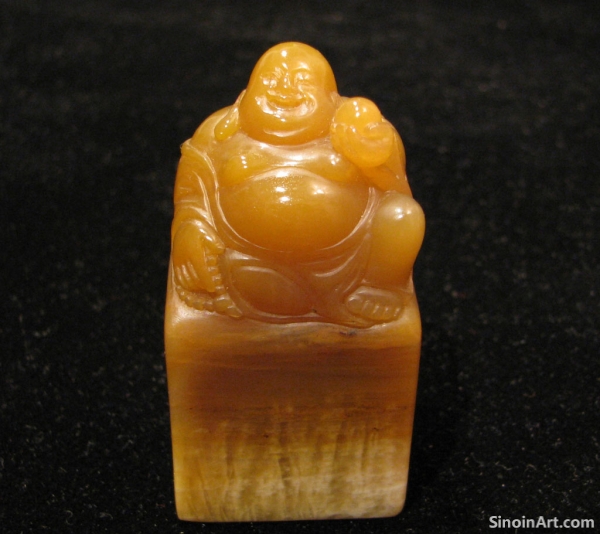Materials Used for Studio Seals: From Stone to Jade and Beyond
|
The selection of materials for a zhāiguǎn yìnzhāng is a critical part of the creative process. The material not only impacts the visual appearance of the seal but also its tactile qualities and the ease of carving. Different materials possess their unique aesthetic properties and practical advantages, offering a diverse range of options for seal carvers. The material is chosen for both practical and aesthetic considerations.  Stone is the most common material for creating studio seals, with various types of stones used based on their color, texture, and hardness. Soapstone, a soft stone with a smooth texture, is a popular choice for its ease of carving. Shoushan stone, with its beautiful colors and patterns, is also highly prized for its aesthetic appeal. Other stone varieties provide a wider range of choice to carvers.  Jade, a symbol of prestige and value in Chinese culture, is also used in creating studio seals. Jade is a particularly challenging material to carve, but its hardness and lustrous appearance make it highly desirable. Jade seals are often considered the most luxurious type of studio seal, and carry cultural significance.  Beyond stone and jade, other materials such as wood, horn, ivory, and metal have been used to create studio seals, each offering unique aesthetic qualities and practical characteristics. These non-traditional options provide a wider range of artistic choices. The choice of material is a reflection of both personal and artistic preferences. The choice of material can also influence the meaning of the seal. Jade, with its associations with wealth and status, is often chosen for studio seals used by high-ranking officials or wealthy collectors, while the selection of stone is often determined by its specific carving qualities. There are also practical concerns when choosing a material. The diversity of materials used for studio seals reflects the creativity and resourcefulness of Chinese seal carvers. Each material brings its own unique character to the artwork, allowing for a wide range of artistic expression within the tradition of seal carving. The variety of materials reflect the diverse interests and styles of the artists. |
Tag : Studio Seal Materials, Seal Stone, Jade Seals, Chinese Carving Stones, Seal Making
Related information
- Collector's Seals vs. Other Seal Types: Purpose and Usage
- Design Elements of Collector's Seals: Composition and Visual Language
- The History of Seal Carving: From Function to Art
- The Historical Evolution of Studio Seals: From Early Beginnings to Modern Use
- Seal Carving as a Personal Art Form: Expressing Individuality
This article compares and contrasts collector's seals with other types of Chinese seals, such as name seals, studio seals, and leisure seals, highlighting their unique functions and distinctive features.
This article discusses the design elements of collector's seals, exploring how composition, borders, patterns, and pictorial elements contribute to the seal's visual language and its overall artistic impact.
This article traces the history of Chinese seal carving, from its functional origins in ancient China to its evolution into a refined art form, highlighting its development across different dynasties.
This article traces the historical development of studio seals in China, from their origins to their contemporary use, exploring how they have evolved and adapted to changing cultural and artistic contexts.
This article explores how Chinese seal carving serves as a personal art form, emphasizing how artists express individuality through character selection, arrangement, carving style, and material choices.